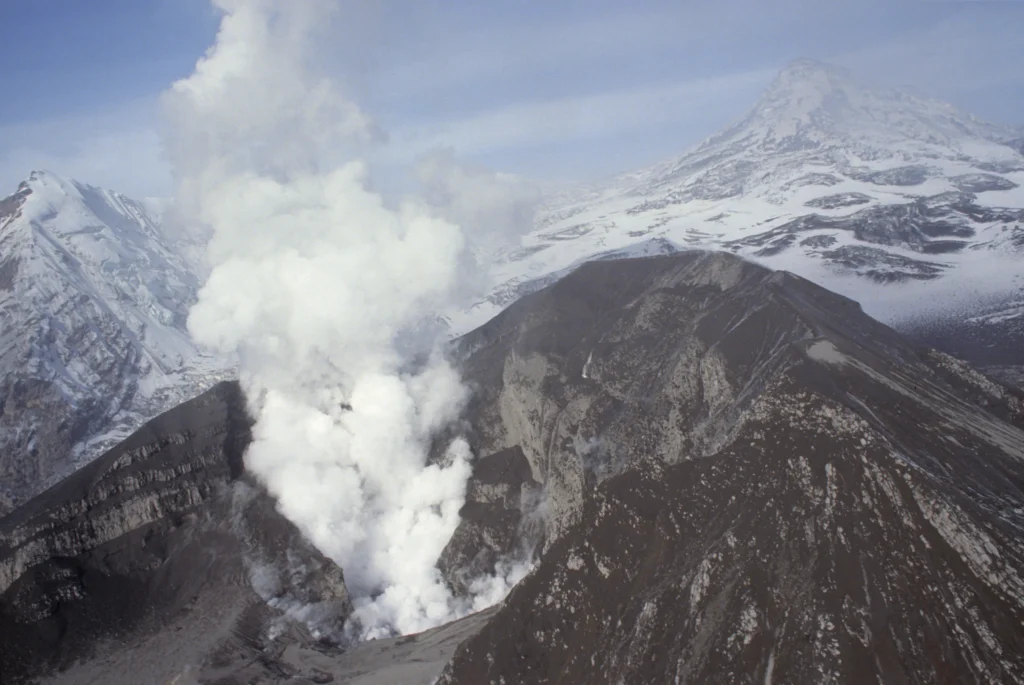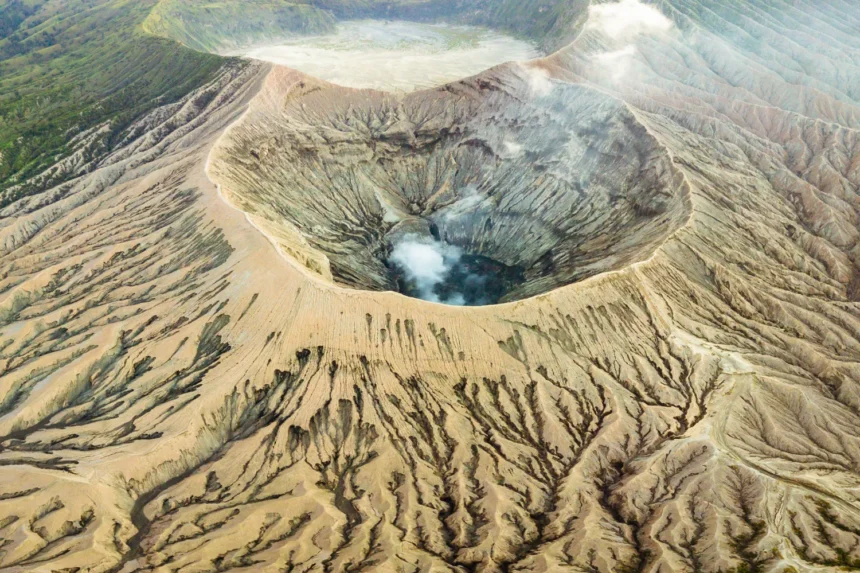Introduction
The Mount Spurr eruption in Alaska is becoming a big worry for geologists and residents. The strong quakes that recently present the potential for an eruption, particularly with magma moving underground. So what will this mean for the places around it, and how might we brace for its potential fallout?
Here, we break down the new activity at Mount Spurr, what experts are saying and what might happen if the volcano erupts.
The Eruptions of Mount Spurr Through History
Mount Spurr is an active stratovolcano in Alaska, located approximately 80 miles west of Anchorage. In 1992, the volcano unleashed its largest eruption in modern times, spewing ash clouds that reached as far as Canada and canceled flights in the region.
Read also: Types of Volcanoes: A Guide to the 6 Most Dangerous Forms
Previous Eruptions:
| Year | Eruption Impact |
| 1953 | Minor eruption with ashfall in Anchorage |
| 1992 | Major eruption, disrupting air traffic and causing ash-related health issues |
● Major eruption that disrupted air traffic, causing ash-related health problems
● Plume disrupted air travel and caused air-borne illness.
In light of that history, it is no wonder that scientists are keeping a watchful eye on the volcano’s recent activity.
Indications That Alaska’s Mount Spurr Eruption Might Be Near
1. Increased Seismic Activity
Observing the number of earthquakes, which tend to spike before volcanic eruptions, gives signs. In recent months, seismic sensors surrounding Mount Spurr have recorded an increase in small earthquakes, suggesting that magma is moving underneath the volcano.
2. Ground Deformation
Satellite images and GPS measurements have captured gradual changes in the earth around Mount Spurr. So when magma rises, the surface becomes slightly domed, a key sign that pressure accumulates below the volcano.
3. Gas Emissions Rising
Colombian scientists have detected an increase in sulfur dioxide (SO2) emissions. This gas is produced by magma and can indicate an impending eruption. If gas emissions are on the rise, it may mean molted rock lies handily near the surface.

4. Thermal Anomalies Detected
By measuring temperature changes with thermal imaging, researchers have observed subtle increases around the crater that corroborate that the volcano is indeed warming.
Read also: Explosive Threat: Top 10 Most Dangerous Volcanoes on Earth
How Mount Spurr Eruption Might Affect Alaska
1. Air Travel Disruptions
Such a major eruption would blow ash into the atmosphere, possibly grounding planes across North America. The eruption in 1992 resulted in cancellations of many flights because of visibility problems and concern that the engines could be damaged.
2. Ashfall in Anchorage and Surrounding Areas
Depending on the direction of wind patterns, heavy ashfall may fall on Anchorage and surrounding regions. Ash can lead to respiratory issues, destroy buildings, and taint water sources.
3. Environmental Consequences
Volcanic eruptions can completely transform landscapes, reshaping rivers, glaciers, and wildlife. Ash deposits and possible mudflows could threaten the surrounding ecosystem.
4. Economic Impact
From flight cancellations to road closures and damage to agriculture, a Mount Spurr eruption could cost millions of dollars in damage and loss of productivity.
Read also: Volcanoes – The Science And Secrets Of The Mountains Of Fire
What Are Scientists and Officials Saying?
The Alaska Volcano Observatory (AVO) is monitoring Mount Spurr closely. Although they have not officially announced that an eruption is imminent, there are signs that the volcano is becoming more active.
According to AVO experts:
“Though we cannot predict the timing of such a phase, the recent data suggest a state of heightened volcanic unrest. Residents are advised to monitor events and be ready,” it said.
Officials are urging people in Anchorage and neighboring communities to take precautions like stocking emergency supplies, checking air quality reports, and staying tuned to official alerts.
How to Get Ready for a Volcanic Eruption
If you live in a place that might be impacted by the eruption of Alaska’s Mount Spurr, here are some important things to do:
1. Create an Emergency Kit
- Face masks to protect against inhaling ash
- Dust goggles to protect eyes from finely ground ash particles
- Bottled water and non-perishable food for contamination
- Battery-powered radio to listen to news updates
2. Stay Informed
Follow the Alaska Volcano Observatory, National Weather Service, and local authorities for up-to-the-minute details.
3. Be Ready for Travel Disruptions
If you have future flights with air travel through Alaska, monitor your airline and be ready for possible cancellations.
4. Protect Your Property
- Seal windows and doors to keep ash from coming inside your home.
- Cover electronics and appliances to prevent damage from fine ash particles.
- You should have a plan for managing ashfall on your roof and vehicles.
Read also: 7 Largest and Most Dangerous Volcanoes by Continent You Should Fear
Key Takeaways
- Mount Spurr is an active volcano, and seismic tremors, gas emissions, and thermal changes evidence its high volcanic activity.
- Past eruptions have accompanied widespread disruptions, and another eruption could disrupt air travel, pose a public health risk, and have an environmental impact.
- The scientists are closely watching the situation but have recorded no eruptions.
- Alaskans should have their plans and supplies in order in case of ashfall and service disruptions.
FAQs
1. When was the last time Mount Spurr erupted?
The last significant eruption was in 1992, which caused major ashfall in Anchorage and flight cancellations across North America.
2. How dangerous is a Mount Spurr eruption?
The danger level depends on the magnitude of the eruption. A small event may cause minor ashfall, but a larger eruption could disrupt air travel, affect health, and damage infrastructure.
3. What are scientists doing to monitor Mount Spurr?
The Alaska Volcano Observatory is monitoring changes in the volcano’s activity using seismic sensors, satellite imagery, and gas emissions tracking.
4. Can volcanic eruptions be predicted accurately?
While scientists can detect warning signs, predicting the exact timing and scale of an eruption remains challenging.
5. How should I prepare for an ashfall event?
Stock up on masks, goggles, bottled water, and emergency supplies. Stay indoors as much as possible and monitor air quality reports.





